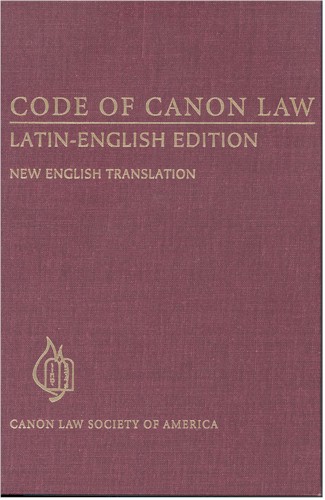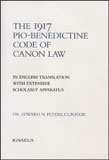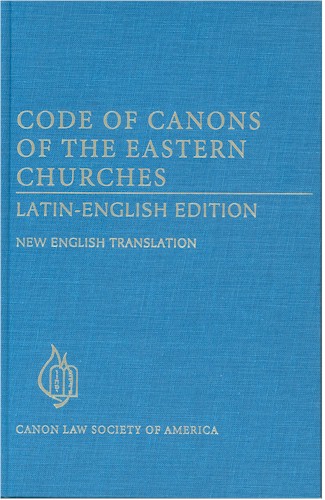|
To work for the proper implementation of canon law is to play an extraordinarily constructive role in continuing the redemptive mission of Christ. Pope John Paul II |
|
|
|
|
Resolution 1152 x 864 |
Updated 3 jan 2013 |
A Canonical Look at Ad Tuendam Fidem |
|
Overview |
This essay examines the papal motu
proprio Ad Tuendam Fidem (To Defend
the Faith), primarily in one context, namely in Catholic institutes of
higher learning. Ad
Tuendam is important for many areas of Church life, but perhaps none so much
as academe.
|
|
Edward Peters, "A canonical look at Ad Tuendam Fidem", The Turnaround (Oct 1998) 10-11. |
In a remarkable series of recent, pointed documents, Pope John Paul II has
halted years of what seemed to some as Roman reluctance to move on several
doctrinal and disciplinary issues, and sent an unambiguous message that not only
will the Church announce the truths of Faith (which was never in question), but
that it will also defend those
truths, particularly within its own ranks and institutions. Indeed, the last
eighteen months have seen more incisive exercises of teaching and disciplinary
authority on the part of the Holy Father and certain key Vatican dicasteries
than have been seen in the whole of the rest of this lengthy and historical
pontificate.
To begin with, the pope expressly stated that the purpose of this new document,
by which enforceable text was added to the current Western and Eastern Codes of
Canon Law, was to protect the Church’s teaching of faith and morals
“especially among those dedicated to the study of sacred theology”, that is,
in Catholic colleges, universities, and pontifical faculties. Roughly half of
the world’s nominally Catholic colleges, universities, and faculties are
located in the United States and Canada, so the heightened implications of the
pope’s actions for North America are obvious.
Prior to Ad Tuendam, Canon 750 of the
1983 Code stated that “All that is contained in the written word of God or in
tradition, that is, in the one deposit of faith entrusted to the Church and also
proposed as divinely revealed either by the solemn magisterium of the Church or
by its ordinary and universal magisterium, must be believed with divine and
catholic faith…” Suffice it to say that, because Canon 750 seemed to
restrict those matters worthy of “divine and catholic faith” to subjects
which were both part of Sacred Tradition and
proposed as divinely revealed, an argument could be made (under the strict
interpretation rubric of Canon 18, among others), that those withholding assent
from matters which, pro arguendo,
were conceded as being part of ecclesiastical tradition, but which were not
recognized as “divinely revealed”, could not be punished under Church penal
law.
Arguments against this excessively narrow construction of the Church’s canonical ability to regulate its own ranks existed, of course, but given the general and pervasive lack of desire to treat lapses of ecclesiastical doctrinal discipline in a formal process, these arguments were not readily accessible or tested. They have, in any event, been obviated by Ad Tuendam which has clearly and unambiguously expanded the scope of Canon 750, by adding a new section to it, and by the pope’s decision to make this new provision of law expressly enforceable in a penal process.
The new text of Canon 750 reads in pertinent part: “Each and every thing
definitively proposed by the magisterium of the Church regarding faith and
morals … must also be firmly accepted and held; one who denies [such]
propositions…opposes the doctrine of the Catholic Church.” Gone now, of
course, is any argument that only
matters recognized as “divinely revealed” can be the subject of the
Church’s coercive power. At the same time Canon 750 was modified, Canon 1371
was amended to state that anyone who violates Canon 750, as amended obviously,
can now be punished by a “just penalty”. Once more, the concerns of Canon 18
that ecclesiastical penal law not be read more expansively than the text of the
law will reasonably admit have been satisfied, for Canon 1371 now makes express
use of Canon 750. Finally, because no other period was specified therein, Ad
Tuendam will, despite its signature date of May 18, 1998, and its publication on
June 30, only go into force three months after it is published in the
Acta Apotolicae Sedis (see Canon 8). This should be more than enough time
for those affected by this brief document to assess its content.
A commentary issued by the Congregation for the Doctrine of the Faith just one
day after the release of Ad Tuendam
gives practical guidance on the scope of subjects reasonably regarded as falling
under the protection of the amended Canon 750 and need not be recited here. It
would be difficult, however, to imagine a college level theology course which
would not touch upon one or several of the doctrinal matters included in CDF’s
commentary. While probably not qualifying technically as an “authentic
interpretation” of either Ad Tuendam
or Canon 750, the dicastery’s commentary will certainly contribute to the
practical operation of CDF, should it take direct charge of a given case,
particularly in light of its own recently published revised procedural
norms on
the investigation of controversial theological works.
In using the phrase “a just penalty”, the Legislator made available the
entire range of ecclesiastical sanctions, whether censures (namely,
excommunication, interdict, or [clerical] suspension) or expiatory penalties,
including deprivation of office (1983 CIC 1336). This strengthens a bishop’s
(or Rome’s, for that matter) hand in dealing with dissent within academe, as
it does not force one into the “all or nothing” stance which censures,
particularly excommunication, evoke in many people’s minds. Specifically, to
the degree that a teaching post in a Catholic institution of higher learning can
be termed an ecclesiastical office (see Canon 145, which I believe supports such
a reading), to say nothing of the necessity of the canonical mandate to teach
theological disciplines (see Canon 812 and Ex
corde Ecclesiae), one’s demonstrated failure to abide by the requirements
of Canon 750, as amended, makes one subject to the loss of ecclesiastical
teaching office and withdrawal of, or ineligibility for, a mandate to teach
theological sciences under Church auspices. In brief, Ad
Tuendam removes the last theoretical objections to the exercise of canonical
authority over dissident academics on the part of local or universal
ecclesiastical authority.
A final but important aside needs to be made here because, I believe, Ad
Tuendam signals a wider Vatican willingness to use more modern, and
certainly more efficient, methods of legal revision than was followed under
the 1917 Code. The Pio-Benedictine Code, in effect from 1917 till 1983, was,
strictly speaking, never revised. Over the years some canons were abrogated (for
example, certain procedural canons applying to marriage nullity cases were
dropped) and many other canons were “authentically interpreted” in such a
way as to widen or narrow their impact, but none were ever revised, that is,
textually modified and left within the body of the law. This view of the Code as
a self-sustaining legal document which required only occasional
“reinterpretation” in order to respond adequately to the times, contributed
to the perception of canon law as unduly lethargic in its responses precisely to
new problems.
Because the 1983 Code made its appearance essentially as did the 1917 Code,
completely abrogating the canon law which preceded it, it remained an open
question among canonists as to whether the new Code would make use of the more
facile process of textual revision or amendment, so common among modern legal
systems, or whether the cumbersome process of “interpretation”, supplemented
by the occasional removal of subjects from the purview of the Code, would
constrain the Legislator’s ability to respond most directly to new issues.
Now, without jettisoning the “interpretation” process, of course, and
without prejudice to the Legislator’s authority to treat certain matters
within or without the Code as he sees fit, clearly Ad
Tuendam has added a new dimension to the operation of law within the Church,
namely textual amendment, which process obviously offers a much quicker and
cleaner method of adapting law to changing circumstances. This is just one more
way in which the importance of Ad Tuendam
will eventually be felt in ecclesiastical circles quite removed from academic
ones.
|




